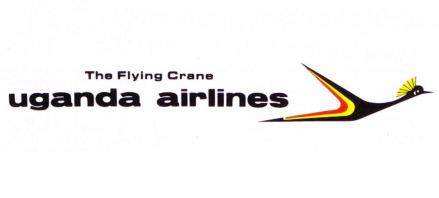Commenced operations 1977 (1977) Founded 1976 | Ceased operations May 2001 (2001-05) Headquarters Entebbe, Uganda | |
 | ||
Destinations 8 (at the time of closure) Company slogan The flying crane (1986) Hub Entebbe International Airport | ||
Experts express mixed feelings on planned revival of uganda airlines
Uganda Airlines was the flag carrier of Uganda. The airline was established in May 1976 (1976-05), and started operations in 1977. It was headquartered in Entebbe, Wakiso District, Uganda, and operated from its hub in Entebbe International Airport.
Contents
- Experts express mixed feelings on planned revival of uganda airlines
- History
- Privatisation attempt and collapse
- Destinations
- Codeshare agreements
- Fleet
- Accidents and incidents
- References
Attempts were made by the Government of Uganda to privatise the company, but all potential bidders pulled out, eventually leading to the liquidation of Uganda Airlines Corporation in May 2001 (2001-05). In 2013 there were plans from the government to revive the carrier, Following the Ugandan Civil Aviation Authority revoking Air Uganda's AOC over satety concerns in June 2014 (2014-06), discussions restarted in late 2014.
History
Uganda Airlines was founded as a subsidiary of the government-owned Ugandan Development Corporation (UDC) in May 1976 (1976-05) as a replacement of the services previously operated by East African Airways. It commenced operations in 1977, when Uganda Aviation Services (UAS), set up by British United Airways in 1965 but then a UDC subsidiary, was absorbed by Uganda Airlines, taking over the UAS route network. Following delivery of the first Boeing 707-320C in the late 1970s, new routes to Brussels, London and Rome were inaugurated. A second Boeing 707-320C entered the fleet in 1981. That year, new routes to Cairo, Cologne and Dubai were launched, followed by Dar es Salaam, Kilimanjaro and Nairobi in subsequent years.
By March 1990 (1990-03) the fleet included one Boeing 707-320C, two Fokker F27-600s, one Lockheed L-100-30, one Twin Otter and one B-N Trislander. A Boeing 737 was leased from Air Zimbabwe in 1994 to serve Bujumbura and Kigali, as well as destinations in South Africa. Tel Aviv was added to the route network in 1995, and by 1998 all European routes were discontinued.
Upon the creation of Alliance Air in late 1994—later known as SA Alliance—an entity jointly owned by the Tanzanian and Ugandan governments, Air Tanzania and Uganda Airlines, as well as by South African Airways (SAA), Tanzania and Uganda granted the rights of long-haul operations to the new airline. The agreement intended to feed Alliance Air's operations with both Air Tanzania and Uganda Airlines domestic and regional services. However, both regional carriers grew less than expected, and the deficit Uganda Airlines accumulated led the Ugandan Government to make a decision on whether to liquidate the airline or privatise it.
Privatisation attempt and collapse
In the late 1990s, the airline was in a delicate cash position owing to mismanagement, when the Government of Uganda planned to privatise the debt-ridden airline, seeking for an investor to keep the company afloat. Initially, several firms held interest in taking over Uganda Airlines. SA Alliance/SAA, Air Mauritius, British Airways, Johannesburg-based Inter Air, Kenya Airways, and Sabena, all seemed to be interested bidders at the beginning, but eventually declined to submit bids, except for SAA that remained the only bidder by early 1999. SAA would have had a 49% participation in the company; nevertheless, it later dropped its bid after encountering strong legislature opposition. Having no offers, the Ugandan Government liquidated the airline in May 2001 (2001-05).
Destinations
From its hub in Entebbe International Airport, in its heyday the company used to operate scheduled services to destinations within Africa, Europe and Middle East. Following is a list of destinations Uganda Airlines served all through its history:
Codeshare agreements
Following is a list of companies Uganda Airlines had codeshare agreements with at the time of closure; routes were actually operated by Uganda Airlines:
Fleet
Historically, the company operated the following equipment:
Accidents and incidents
According to Aviation Safety Network, the airline experienced three accidents/incidents throughout its history; only one of them yielded fatalities. Hull-losses are listed below.
